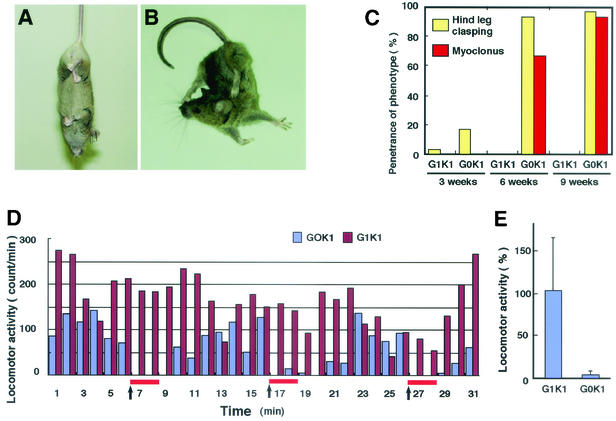FIG. 1.
Behavioral analysis of mafG::mafK compound mutant mice. (A) A mafG−/−::mafK+/− mutant mouse (6 weeks old) displaying characteristic hind leg clasping. (B) A mafG−/−::mafK+/− mutant mouse (10 weeks) with long-lasting myoclonus. (C) The penetrance of the motor disorder was examined at 3, 6, and 9 weeks of age. Bars indicate frequencies of mice displaying each phenotype. G1K1 and G0K1, mafG+/−::mafK+/− control and mafG−/−::mafK+/− mutant, respectively. (D) Representative pattern of locomotor activities of mafG−/−::mafK+/− (mutant) and mafG+/−::mafK+/− (control) mice. Each bar indicates the frequency of ambulation per minute. Arrows, times of acoustic stimuli. (E) Comparison of the influences of acoustic stimuli on the locomotor activities of mutant and control mice. The mean ambulation count for 2 min after stimulus (red bars in panel D) was divided by that for 5 min before stimulus. This value was averaged for five independent animals and depicted as a bar. Error bars, standard deviations.

